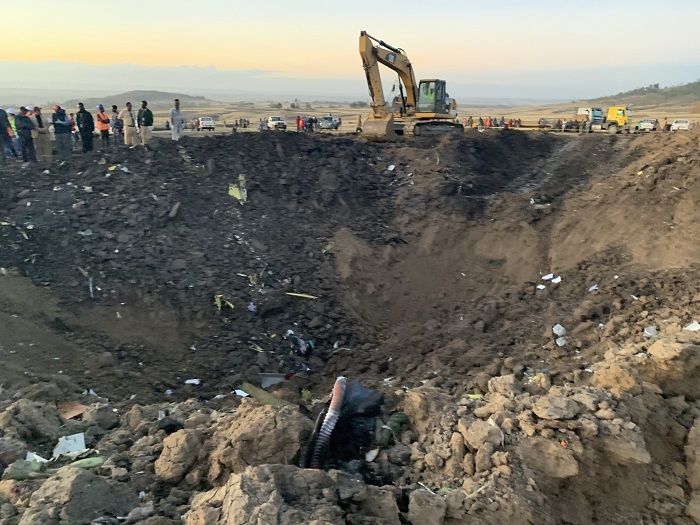Washington, Preliminary findings from officials investigating the March 10 Ethiopian Airlines crash suggested that a flight-control feature was automatically activated before the plane nose-dived into the ground killing all 157 people on board, a media report said on Friday.
Citing multiple unnamed sources, the Wall Street Journal report said that the findings were the first to come to light based on data retrieved from the crashed Boeing 737 MAX 8’s black boxes, CNN reported.
Earlier this month, the US-based Federal Aviation Administration (FAA) agency grounded all Boeing 737 Max planes, saying it had identified similarities between the Ethiopian Airlines crash and the Lion Air crash in Indonesia last October.
Ethiopian Minister of Transport later reiterated that point, saying preliminary data recovered from the black boxes of the crash in Ethiopia showed similarities to the Lion Air crash.
The Ethiopian Airlines Flight 302 crashed the morning of March 10 after taking off from Addis Ababa on its way to Nairobi, Kenya, killing all 157 people on board.
Lion Air Flight 610 crashed into the Java Sea in Indonesia on October 29 after taking off from Jakarta. All 189 people on board died.
Both were Boeing 737 MAX 8 planes.
The reported findings come from a preliminary report that’s required by the investigating authority to be produced within 30 days of an incident. The findings are not final and subject to change as the investigation continues.
If confirmed, the preliminary findings cited in the Wall Street Journal would suggest that the automated flight software called the Manoeuvering Characteristics Augmentation System (MCAS), which was installed in both planes could be to blame in the two incidents.
The MCAS is a system that automatically lowers the nose of the plane when it receives information from its external angle of attack (AOA) sensors that the aircraft is flying too slowly or steeply, and at risk of stalling.
In the Lion Air crash, the MCAS forced the plane’s nose down more than 24 times before it finally hit water, according to a preliminary investigation by Indonesia’s National Transportation Safety Committee, which also found the system was responding to a faulty sensor.
On Wednesday, Boeing unveiled an overhaul to the software system and the pilot training of its 737 MAX plane.









